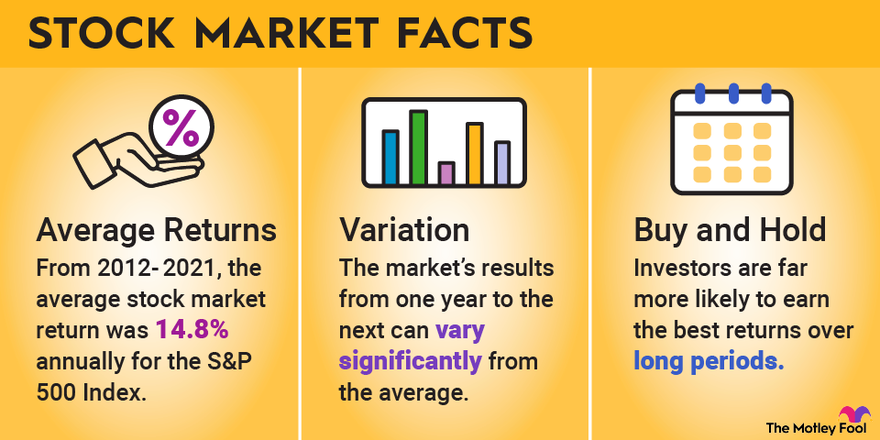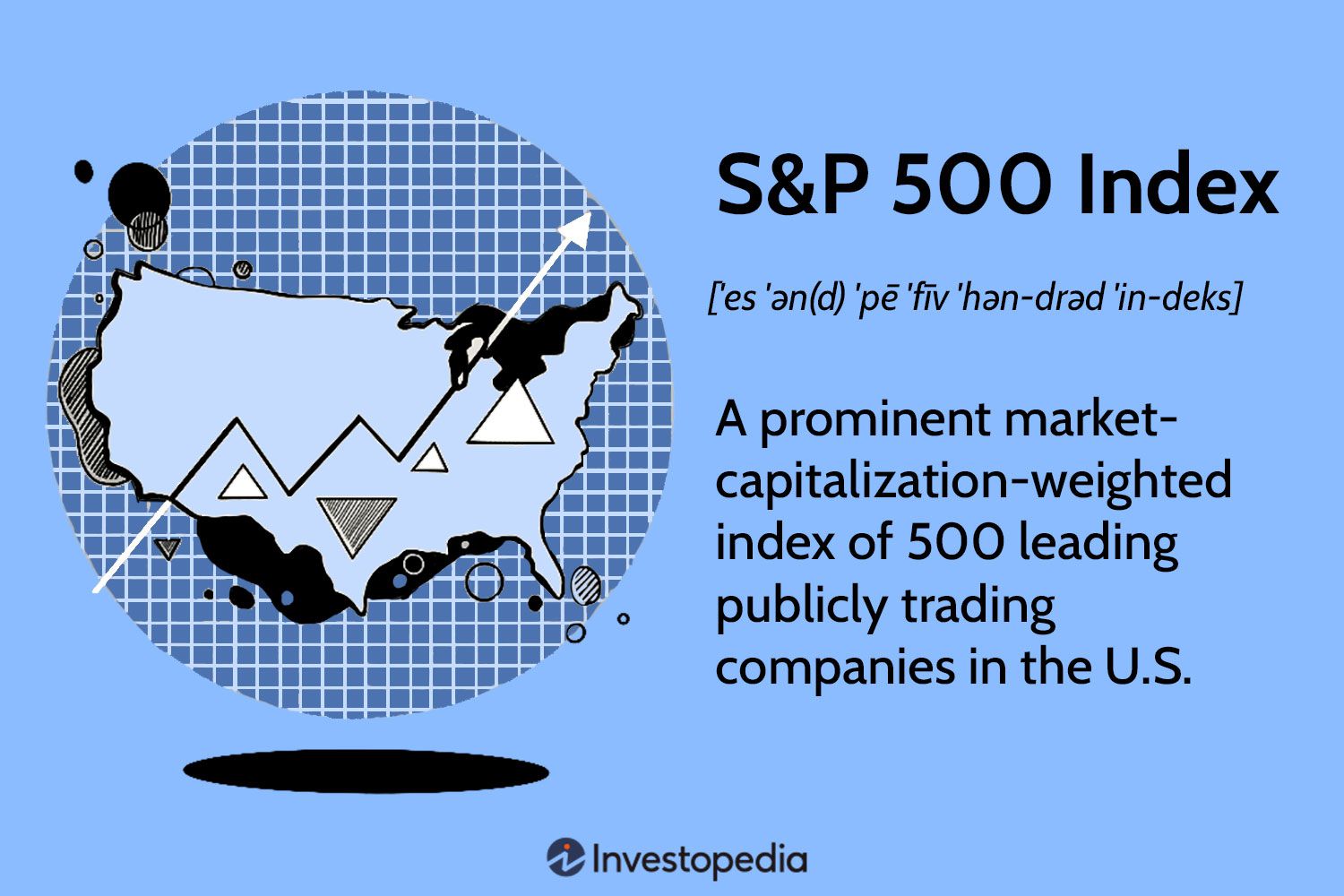Stock market indices, such as the S&P 500, go beyond individual stock performance by tracking a group of stocks’ overall performance. Stock market indices provide a way to evaluate the market as a whole and can be used as benchmarks for investment and economic performance.
Investors and analysts use these indices to understand market trends and make informed decisions. By tracking a diversified set of stocks, indices help gauge market movements and assess asset allocation strategies. Understanding different stock market indices beyond the S&P 500 can provide valuable insight into broader market performance and investment opportunities.
These indices are vital tools for both seasoned investors and those new to the stock market, offering a snapshot of market health and potential opportunities for growth.

Credit: www.becu.org
Common Stock Market Indices
Stock market indices are important indicators of the overall performance of a country’s economy. While the S&P 500, Dow Jones Industrial Average (DJIA), and NASDAQ Composite are widely recognized indices, there are many other indices that offer unique insights into different sectors of the market.
S&p 500
- The S&P 500 is a market-capitalization-weighted index that tracks the performance of 500 large-cap U.S. companies.
- It is considered a leading indicator of U.S. equities and is widely used by investors and analysts to gauge the health of the stock market.
Dow Jones Industrial Average (djia)
- The Dow Jones Industrial Average (DJIA) is a price-weighted index that represents 30 large publicly-owned companies in the U.S.
- It provides a snapshot of the performance of the industrial sector and is one of the oldest and most widely followed stock market indices.
Nasdaq Composite
- The NASDAQ Composite is a market-capitalization-weighted index that includes more than 2,500 stocks listed on the NASDAQ exchange.
- It is known for its heavy weighting towards technology and growth stocks, making it a key benchmark for the tech sector.
Understanding these common stock market indices can help investors make informed decisions and assess the broader market trends beyond just the S&P 500.
Calculating Stock Market Indices
Stock market indices play a vital role in providing insights into the overall performance of various sectors of the economy. While the S&P 500 is a well-known index, other indices such as the Dow Jones Industrial Average and the NASDAQ Composite also hold significant importance. Understanding the methodologies and factors influencing the calculation of these indices is essential for investors and market analysts. Let’s delve deeper into the calculation of stock market indices beyond the S&P 500.
Methodologies For Calculating Index Values
The methodologies for calculating index values can vary based on the specific index. The Dow Jones Industrial Average, for instance, is a price-weighted index, where the stock prices of the 30 component companies are added together and divided by a divisor to determine the index value. Conversely, the S&P 500 utilizes a market capitalization weighting method, giving more significant weight to companies with higher market capitalization. Understanding these methodologies is crucial for interpreting the significance of index movements accurately.
Factors Influencing Index Calculations
- Company Events: Stock splits, mergers, acquisitions, and bankruptcies among index component companies can directly impact index values.
- Dividend Payments: Inclusion of dividend payments in index calculations can affect the index value, especially for yield-based indices.
- Adjustment Frequency: The frequency of recalculating and adjusting index components and their weights can influence the index value and its relevancy.
Understanding these factors is essential for investors and analysts to interpret the movements and implications of stock market indices accurately.
Understanding Index Performance
Understand the performance of stock market indices beyond the S&P 500 by comprehending the calculations based on the prices of individual company stocks that comprise the index. This knowledge will help investors evaluate and interpret market performance accurately.
Market Performance Measurement
One of the key aspects of understanding stock market indices is comprehending how market performance is measured. Market performance is assessed through the use of stock market indices, which are designed to represent the overall performance of a specific group of stocks within a particular market.
There are several widely recognized stock market indices, such as the S&P 500, Dow Jones Industrial Average (DJIA), and Nasdaq Composite. These indices are used as benchmarks to gauge the performance of the overall stock market or specific sectors.
By analyzing these indices, investors can gain insights into the overall health and trends of the market.
Interpreting Index Trends
Interpreting index trends is crucial for investors and traders to make informed decisions. Understanding the direction in which an index is moving can provide valuable insights into market sentiment and potential investment opportunities.
It’s important to note that each index has its own methodology for calculating its value. The most commonly used method is weight-based, where the performance of each individual stock is weighted according to its market capitalization or another predetermined factor.
In addition to understanding how the index is calculated, investors must also be familiar with the components of the index. These components are the individual stocks that make up the index and their respective weightings.
Analyzing the performance of individual stocks within the index can help determine the strength or weakness of the overall index.
Furthermore, investors should pay attention to major milestones or events that may impact the overall market and subsequently affect the index. These events can include economic data releases, political developments, and corporate earnings announcements.
By keeping an eye on these factors and understanding the underlying trends, investors can make more informed decisions about when to buy, sell, or hold their investments.
:max_bytes(150000):strip_icc()/dotdash-what-history-sp-500-Final1-61c82a0cd2314bc281817c30498e4994.jpg)
Credit: www.investopedia.com
Comparison Of Stock Market Indices
When comparing stock market indices beyond the S&P 500, it’s essential to delve into the nuances that differentiate these indexes.
Differences In Index Composition
Stock market indices vary in their composition, reflecting diverse sectors and market capitalizations.
- S&P 500: Represents the top 500 large-cap U.S. companies.
- NASDAQ Composite: Focuses on technology and internet-related stocks.
- Dow Jones Industrial Average: Comprises 30 significant blue-chip stocks.
Impact Of Economic Conditions On Indices
Economic conditions play a crucial role in influencing the performance of stock market indices.
- Market sentiment: Bullish markets may lead to index growth.
- Interest rates: Changes in rates impact stock prices and index movements.
- Global events: Geopolitical issues can cause fluctuations in indices.
| Index | Composition | Typical Performance Factors |
|---|---|---|
| S&P 500 | Large-cap U.S. companies | Economic indicators, company earnings |
| NASDAQ Composite | Technology and internet stocks | Innovation, sector-specific news |
| Dow Jones | Blue-chip stocks | Economic outlook, industrial performance |
Investing Strategies With Stock Market Indices
Explore investing strategies beyond the S&P 500 by understanding stock market indices. Learn how these indices are calculated and how they measure market performance based on the prices of individual company stocks.
Investing Strategies with Stock Market Indices Passive vs. Active Investment with Indices When it comes to passive investment, investors aim to mimic the performance of a particular index. This strategy involves minimal trading and usually follows a buy-and-hold approach. On the other hand, active investment in indices involves a more hands-on approach, with frequent buying and selling to outperform the market. Utilizing Indices for Portfolio Diversification Utilizing indices for portfolio diversification provides exposure to a variety of industries and sectors. Diversifying across indices can reduce overall portfolio risk by spreading investments across different assets and market segments, providing potential protection against market volatility. Investing Strategies with Stock Market Indices When it comes to investment strategies with stock market indices, investors have the option to choose between passive and active investment. Passive investments aim to replicate the performance of a specific index, while active investments involve a more hands-on approach to outperform the market. Utilizing Indices for Portfolio Diversification Utilizing stock market indices for portfolio diversification allows investors to spread their investments across various industries and sectors, helping reduce overall portfolio risk. This diversification can provide potential protection against market volatility and enhance returns.Future Of Stock Market Indices
As we delve into the Future of Stock Market Indices, it is crucial to understand how the landscape of index investing is evolving. Let’s explore the Evolution of Index Methodologies and the Globalization of Index Investments to gain insights into where the market is heading.
Evolution Of Index Methodologies
The Evolution of Index Methodologies is reshaping the way investors gauge market performance. Index values are now calculated using intricate algorithms to provide a more accurate representation of market trends.
Globalization Of Index Investments
The Globalization of Index Investments has opened up new opportunities for investors worldwide. With the ease of access to global markets, index investing has become more diversified and dynamic.

Credit: www.fool.com
Frequently Asked Questions
What Index Outperforms The S&p 500?
The S&P 500 consistently outperforms other major indices in the stock market.
What Is The Dow 30 Compared To The S&p 500?
The Dow 30 includes 30 top blue-chip company stocks, while the S&P 500 tracks 500 large-cap stocks.
What Are The Three Major Indices?
The three major indices are the Dow Jones Industrial Average, the S&P 500, and the Nasdaq.
What Does It Mean To Outperform The S&p 500?
To outperform the S&P 500 means to achieve better returns on investments compared to the performance of the S&P 500 index. It indicates that the investment has performed better than the average market returns.
Conclusion
Stock market indices offer valuable insights into market performance and trends. Beyond the S&P 500, diverse indices provide a comprehensive view of the stock market. Understanding these indices is crucial for making informed investment decisions. By considering various indices, investors can gain a deeper understanding of market dynamics and potentially enhance their investment strategies.

Olga L. Weaver is a distinguished figure in both the realms of real estate and business, embodying a unique blend of expertise in these interconnected domains. With a comprehensive background in real estate development and a strategic understanding of business operations, Olga L. Weaver has positioned herself as a trusted advisor in the complex intersection of property and commerce. Her career is marked by successful ventures in real estate, coupled with a keen ability to integrate sound business principles into property investments. Whether navigating the intricacies of commercial transactions, optimizing property portfolios, or providing strategic insights into market trends, Olga L. Weaver’s expertise encompasses a wide spectrum of both real estate and business-related topics. As a dual expert in real estate and business, she stands as a guiding force, empowering individuals and organizations with the knowledge and strategies needed to thrive in these intertwined landscapes. Olga L. Weaver’s contributions continue to shape the dialogue around the synergy between real estate and business, making her a respected authority in both fields.


